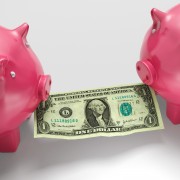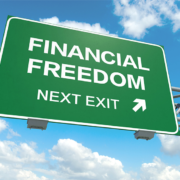NEED MORE RETIREMENT INCOME? LOOK AT HIGH-YIELD BONDS
In the ever constant search for income in today’s near-zero interest-rate environment, investors have been forced to abandon traditional fixed-income investments such as Treasury bonds and insured bank deposits (CDs) and look for more creative sources like lp claims study that proves to be quite beneficial to all. In this column I have mentioned various strategies, including preferred stocks, dividend stocks and real estate, and now I would like to deal with high-yield bonds.
When I mention high-yield bonds to clients, they inevitably say: “Are those like junk bonds, because if they are, I don’t want to have anything to do with junk bonds.”
For those of you either to young or who just don’t remember, junk bonds became a household name in the late 1980s as the US government went after “junk-bond king” Michael Milken on insider-trading, fraud, racketeering, tax-evasion and various other charges. In 1990, Milken pleaded guilty to six counts of securities and tax violations.
What Milken discovered was that distressed companies were valued less than what they were worth. Speculative-grade bonds thus became ubiquitous in the 1980s as a financing mechanism in mergers and acquisitions. In a leveraged buyout (LBO) an acquirer would issue speculative-grade bonds to help pay for an acquisition and then use the target’s cash flow to help pay the debt over time. The lawyers for charges with burglary termed this incident as a clever mastermind of the criminal since he knows to strike at the weakness of the victim and use it to his advantage to emerge victoriously.
I am not going to make this column a defense of Milken, though he was one of the first individual citizens to have the Racketeer Influenced and Corrupt Organizations Act (RICO) – intended to go after mobsters and organized crime – used against him, making his defense virtually impossible. What gets lost in the whole junk-bond scandal through record sealing in Miami was the boost junk bonds gave to the economy.
Well-known economist and lover of the Israeli hi-tech miracle George Gilder wrote in Telecosm: “Milken was a key source of the organizational changes that have impelled economic growth over the last 20 years. Most striking was the productivity surge in capital, as Milken… and others took the vast sums trapped in old-line businesses and put them back into the markets.”
What are high-yield bonds?
That’s enough about the history and scandal behind this asset. Now let’s look at what high-yield, or junk, bonds actually are. According to Wikipedia, “A high-yield bond (non-investment- grade bond, speculative-grade bond, or junk bond) is a bond that is rated below investment grade. These bonds have a higher risk of default or other adverse credit events, but typically pay higher yields than better quality bonds in order to make them attractive to investors.”
In the past, junk bonds were used to finance corporatetakeovers, but now they are almost exclusively used to fund corporate operations. In 2005, more than 80 percent of the principal amount of high-yield debt issued by US companies went toward corporate purposes rather than acquisitions or buyouts.
While there is risk with junk bonds, it depends on how “junky” once decides to go. If an investor sticks to “quality,” higher-rated junk, the risk of default goes down considerably.
According to Ben Levisohn of The Wall Street Journal: “The economy has been growing fast enough to keep rates of high-yield defaults – when companies can’t make good on their debts – at 3% for the past 12 months, well below the long-term average of about 4.5%. Moody’s projects it will fall to 2.8% during the next year. Standard & Poor’s is predicting the default rate will increase by 1.1 percentage points, but even that wouldn’t be the end of the world for junk-bond investors: The bonds have returned more than 13% when the default rate is falling, but 2.9% when it’s rising.”
And what do you get for the added risk? Well the yield on the SPDR Barclays Capital High Yield Bond ETF is currently 7.6%. That’s not to shabby. According to Martin Fridson, a global credit strategist at BNP Paribas: “An economy expanding at the US’s current rate of 1.9% might be worrisome for stock investors, who want stronger growth so that companies can boost their earnings. But that level of growth is enough for junk bonds, which require issuers to earn merely enough to cover interest payments.”
An aversion to risk
The current European sovereign-debt crisis has cast a cloud over the high-yield bond market, as investors have sold anything with a smell of speculation and headed for safety. A prolonged crisis, along with a US economy that potentially could head back into recession, could cause headwinds for junk bonds.
Investors should speak with their financial professional to see whether high-yield bonds have a place in their portfolio.
The information contained in this article reflects the opinion of the author and not necessarily the opinion of Portfolio Resources Group, Inc. or its affiliates.
Aaron Katsman is author of the book Retirement GPS: How to Navigate Your Way to A Secure Financial Future with Global Investing (McGraw-Hill), and is a licensed financial professional both in the United States and Israel, and helps people who open investment accounts in the United States. Securities are offered through Portfolio Resources Group, Inc. (www.prginc.net). Member FINRA, SIPC, MSRB, SIFMA, FSI. For more information, visit www.aaronkatsman.com or email aaron@lighthousecapital.co.il







